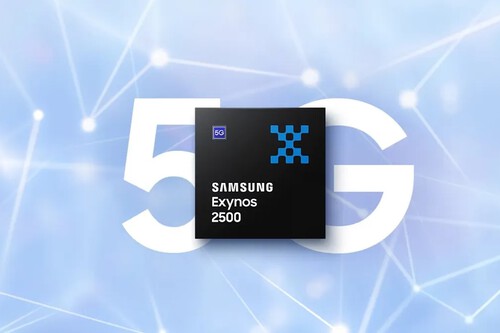The semiconductor industry is focusing on the next generation of integrated circuits, which will be manufactured using 2 nm lithographic processes. Meanwhile, the most advanced processors for mobile phones continue to use 3 nm processes. Industry leaders like TSMC have showcased their capabilities with products such as the Qualcomm Snapdragon 8 Elite, Apple’s A18 Pro, and Xiaomi’s XRing 01.
Now, it’s Samsung’s turn. The company recently introduced its Exynos 2500, which is more than just a processor. It represents a crucial opportunity for Samsung to address concerns about the performance of its mobile chips. This performance is vital for the survival of Samsung’s semiconductor division. Instead of giving up, Samsung has opted to reinvent the design of its high-end mobile processors.
Why this matters. Rumors about the Samsung Exynos 2500 had been circulating since last year, but production hadn’t entered mass production due to disappointing performance in leaked tests. Moving forward with this proposal indicates Samsung’s confidence in the Exynos 2500. It also sends a strong message about the company’s position and potential in the semiconductor market.
Samsung hasn’t announced which device will first feature this processor, but rumors of an upcoming Unpacked event suggest that we may find out soon.
Exynos 2500. Here’s a summary of the chip’s key features:
- It features a ten-core design. It stands out as one of the few high-end processors, alongside Xiaomi’s chip, that employs this design. This makes it a unique offering in the market.
- It promises to deliver 39% more power for AI processing.
- It supports cameras with resolutions of up to 320 MP.
- It’s built on the advanced 3 nm GAA process.
- Its largest core is up to 15% more powerful than its predecessor.
The main question remains: How will these specs translate into real-world performance? The architecture of the Exynos 2500 is quite similar to that of Xiaomi’s XRing. It features ARM Cortex-A725 and A520 cores and a Samsung Xclipse 950 GPU. The Xclipse 950 will need to compete with leading Adreno GPUs.
Key takeaway. The Exynos 2500 features a ten-core CPU. This enables it to handle 320 MP cameras, improve energy efficiency, and significantly enhance AI capabilities. Samsung has refrained from making exaggerated or unrealistic promises. This processor is more powerful than its predecessor, with a strong focus on AI and support for cutting-edge technologies. Only time will tell how it performs in practice.
A crucial step forward. Samsung has faced challenges in its semiconductor division for several years. It recently lost key customers, such as Google, which chose to equip its Pixel devices with a different processor. Samsung needs to maintain solid performance as it competes in the race to develop 2 nm technology.
Currently, the company is delaying two of its most significant projects. One is the construction of its second state-of-the-art chip manufacturing plant in Taylor, Texas. The other is a facility in Pyeongtaek in South Korea. While these projects are essential for advancing its semiconductor capabilities, they won’t be effective without a strong customer base.
The Exynos 2500 is a testament to Samsung’s current standing in the mobile chip market. If it fails, attracting future investments will become increasingly difficult for the company.
Image | Samsung




View 0 comments